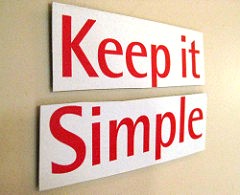
In order to build brilliant strategies for brain injury it can be helpful to have a framework – sort of like the scaffolding around a building – to help guide and support you.
Below are a set of principles that can help to form a framework that is effective, and focusses on the person.
To help memory I am a fan of an acronym – you can see ACORN and BECAUSE in the article on Challenging Behaviour. You could use BECAUSE instead of PECKS here if it works better for you.
Think PECKS – Principles for Brain Injury Strategies
From body building to brilliant strategy building:
P = Positive – Strengths Based
E = Easy Changes First
C = Consistency and Structure
K = Keep it Simple
S = Seek support
We do better when we begin with what we are good at and the focus in on our strengths.
Like a body builder – look at the good points to build and emphasise. Minimise the not so good points.
Talk about what you want in positive terms e.g. I really enjoy it when you speak to me without swearing.
Engage positive rather than negative strategies e.g a reward for what is wanted – not punishment when things don’t go to plan.
Acknowledge what you want more of when it occurs e.g. thanks for talking politely to the Dr today it would be great if you kept doing that.
People most often have experience dealing with their problems: they understand them and work out ways to cope with them. Build on that.
Even if a person has not been in the same situation before they have strengths that can be used in a new situation. Seek them out.
Put yourself in the other person’s shoes = Empathy.
Acknowledge feelings and emotions. It does not mean you agree, it means you acknowledge those feelings and emotions are there.
Look at the person’s strengths in personality and character. How can these be maximised.
Take care not to belittle or minimise the person, or their difficulties, even if they do this themselves. Encourage a positive view.
Easy Changes First
It is usually easiest to change what is around the person rather than change the person – such as changing or removing things that cause difficulties or putting in prompts or cues.
Where possible work to change the approach of people around the person living with brain injury.
Carefully observe what is happening around a person: what might trigger behaviour that causes difficulty for the person. Work to discover what would be easier to change – e.g. the people, the activity, the routine, the situation or surroundings.
It is often easier to avoid problems or issues known to be difficult than to respond after the problem has escalated e.g. if you know a situation, place, person or event triggers a response and you can assist the person to avoid this then it may be better to do this than deal with escalating behaviour.
Re-arrange or make changes to the environment where you can.
Manage change: let the person know ahead of time, continue to remind them of changes that are happening and allow time to accommodate the change.
Consistency and Structure
Stick to what works: follow routines already established OR work with the person and their family to develop a plan for their days, ensuring the person knows what to expect.
Keep to routines as much as possible.
Encourage everyone to use the same approach – consistently.
Use consistent ways to organise and get things done.
Make sure the person has adequate time to complete tasks within their daily routine.
Be aware of when fatigue occurs and try to arrange consistent routines that head off fatigue. After school develop a consistent homecoming routine – snack, rest or watch TV, then join family.
Be clear and concise and use the same consistent messages as much as possible.
 Keep it simple
Keep it simple
Keep your instructions short, simple, easy to understand.
Repeat as often as necessary
For yourself – keep strategies as simple as possible so they are easy to put in place.
And easy for you to remember.
Give feedback about the difficulties, strategies and responses you observe – you may be the only one to see some things.
 Seek Support
Seek Support
Use the support services offered and if support is not offered seek it out.
Build yourself a support network. Attend support meetings, talk with others.
Wherever you can help to build a support network, and maintain the person’s friendship networks.
Provide realistic expectations of the people you work with and of yourself.
Take care not to overburden the person with responsibility they are not able to take.
Do not be afraid to ask – for help, for explanations, for support.
And Finally
When using a set of principles we would describe the strategies under each as “Principles In Action”. I still like this concept of describing how you put principles into practice. There are many many more Actions or Strategies than I have listed here. Please feel free to add your own – privately or in the Comments below.

